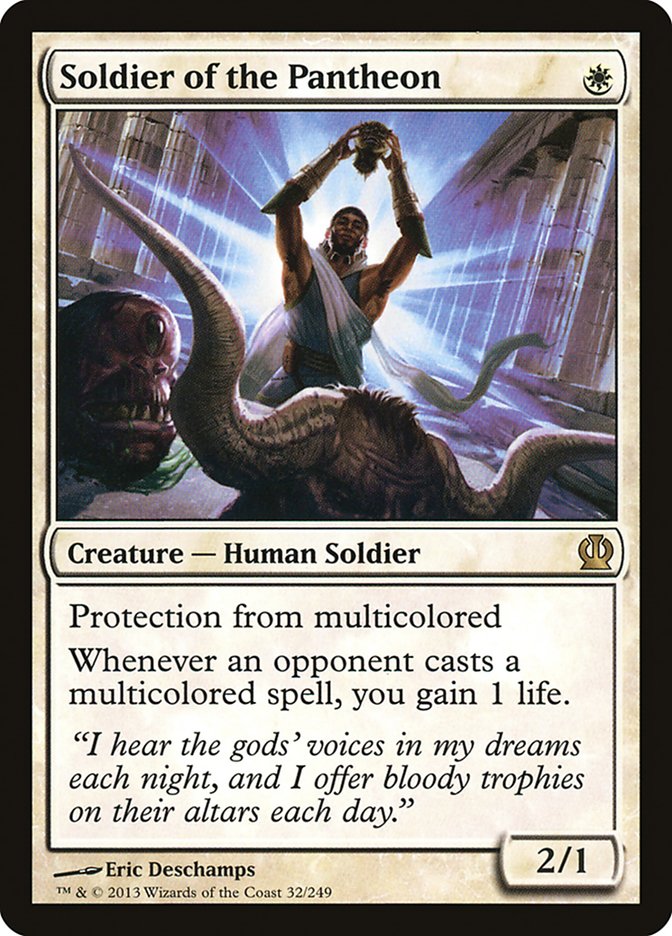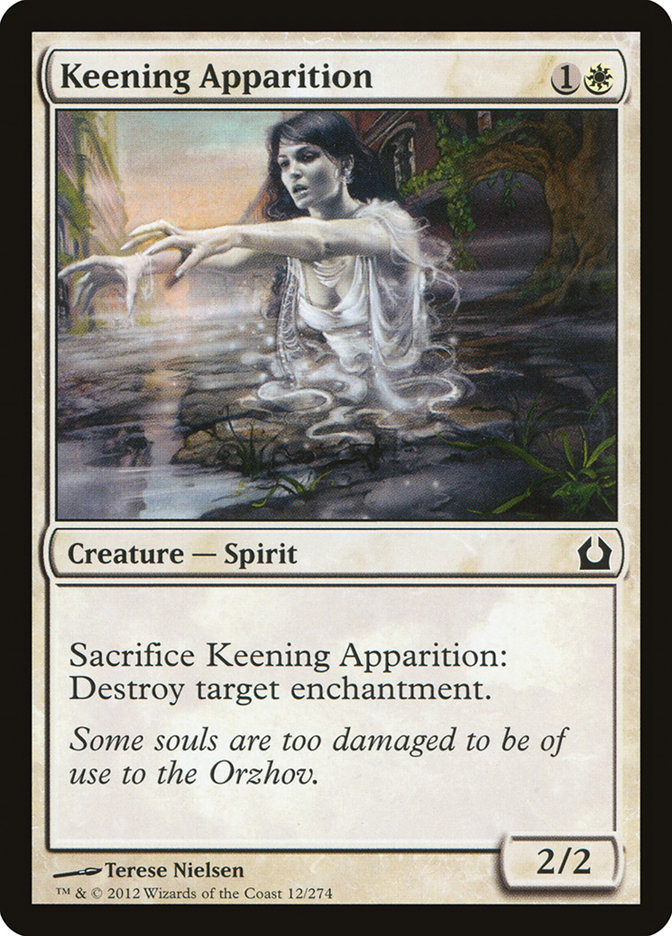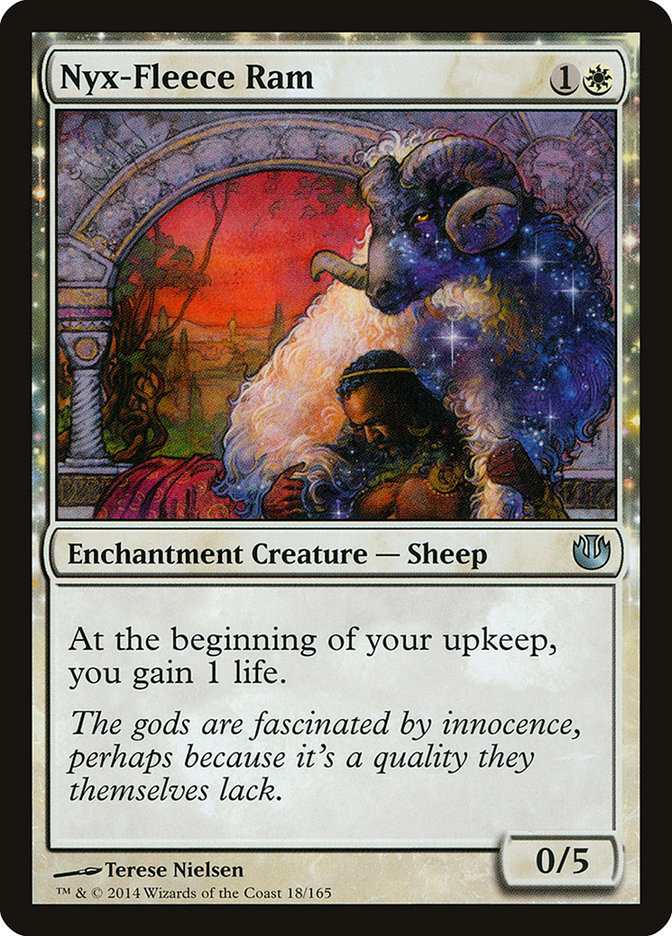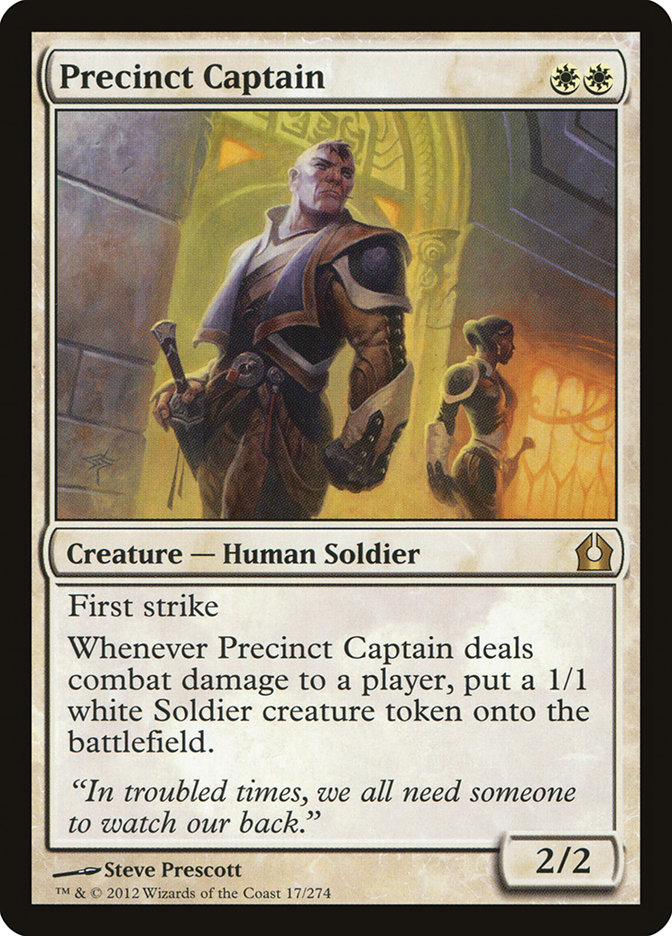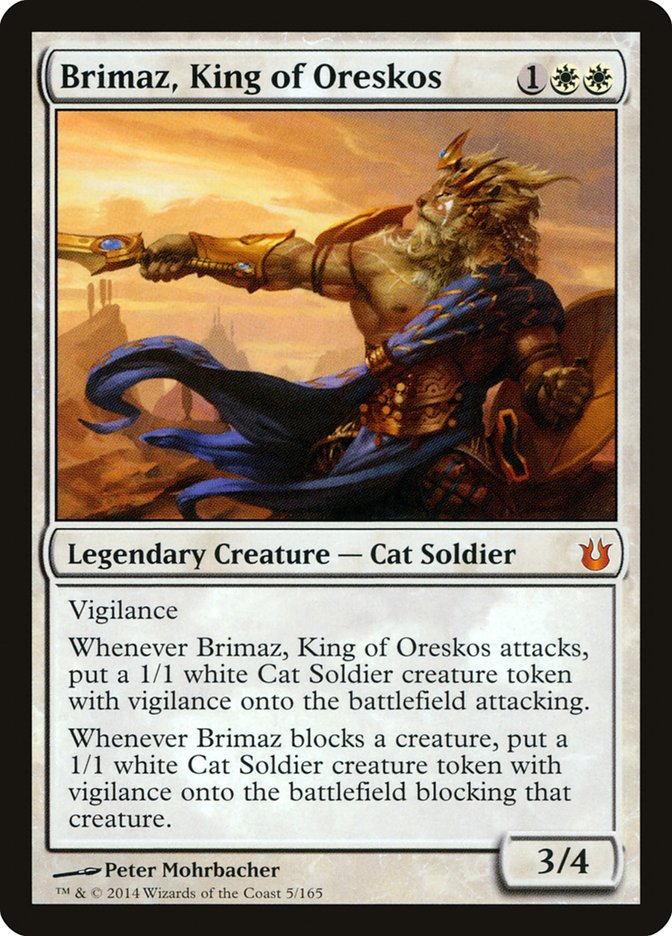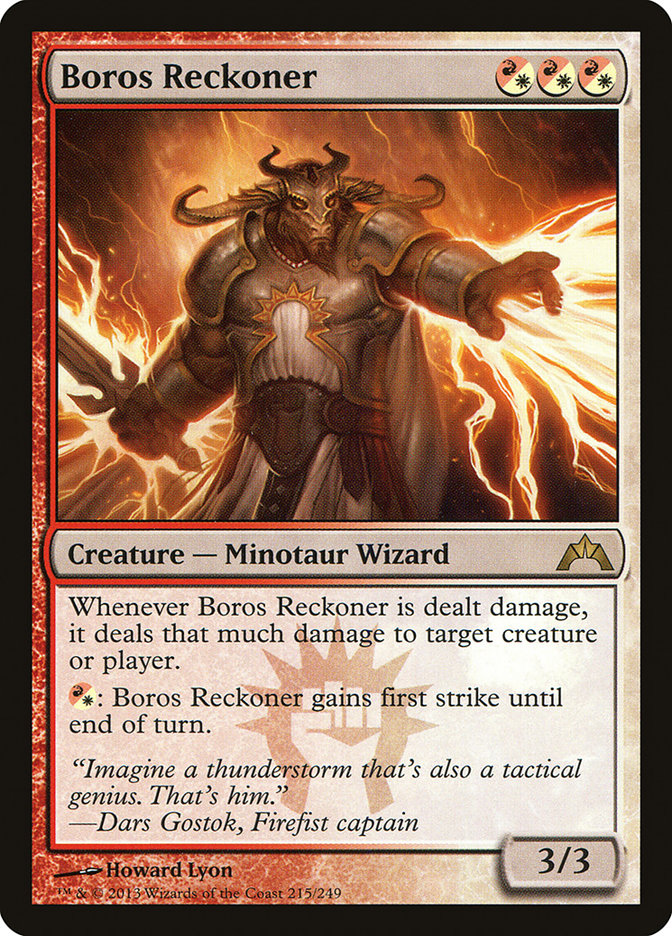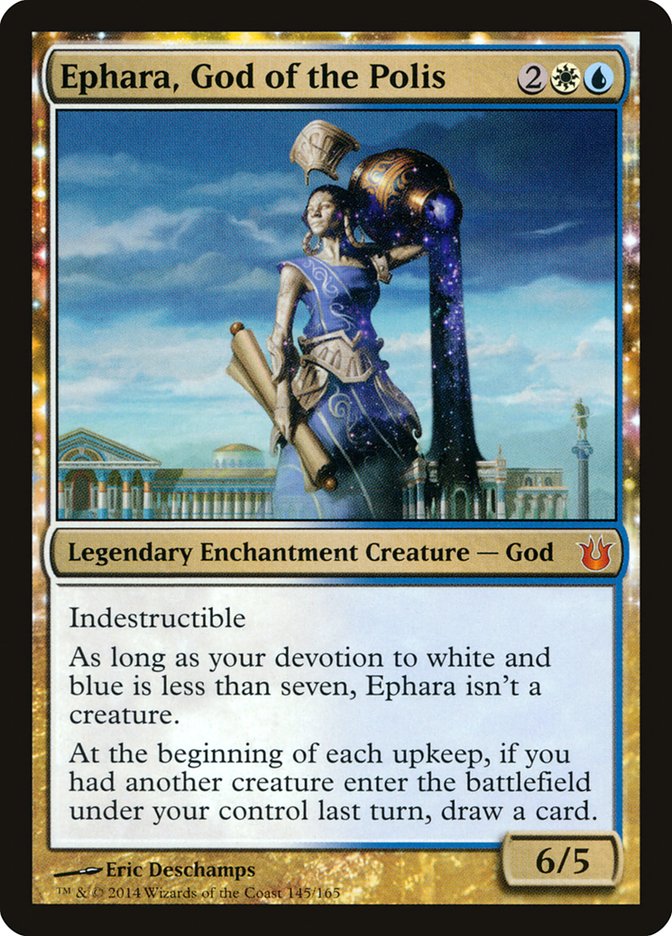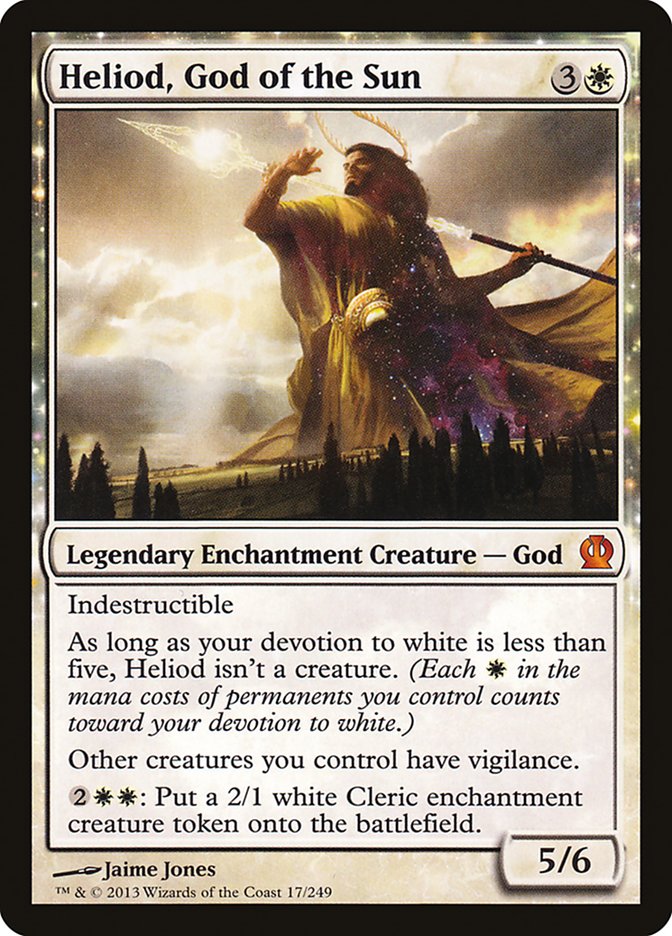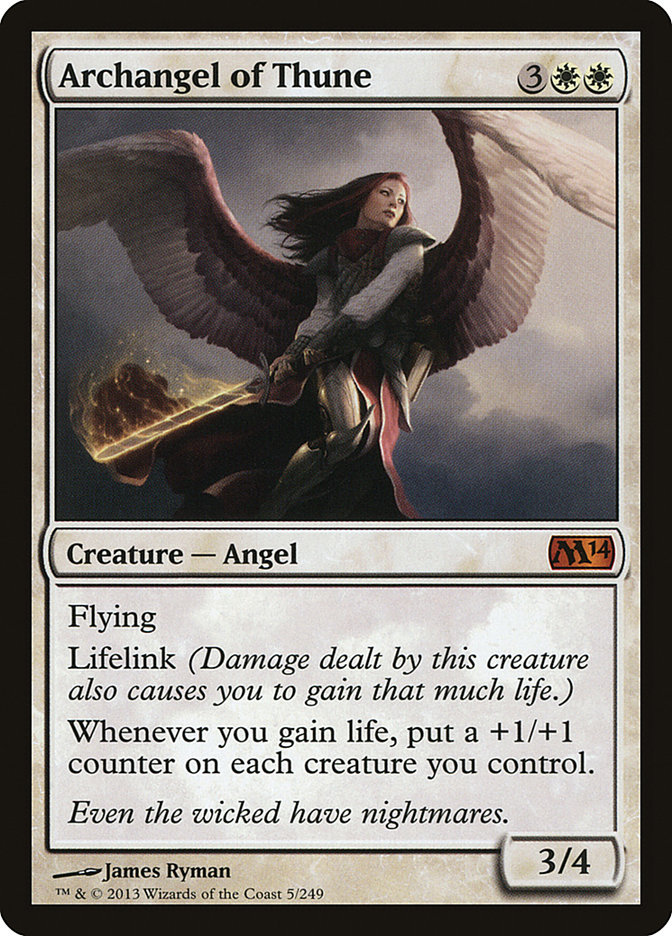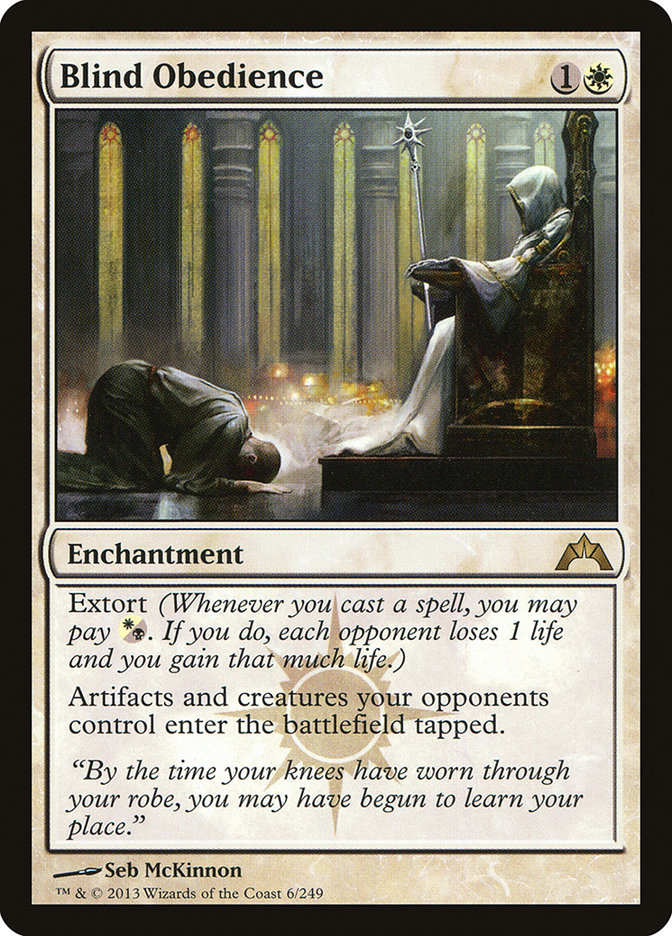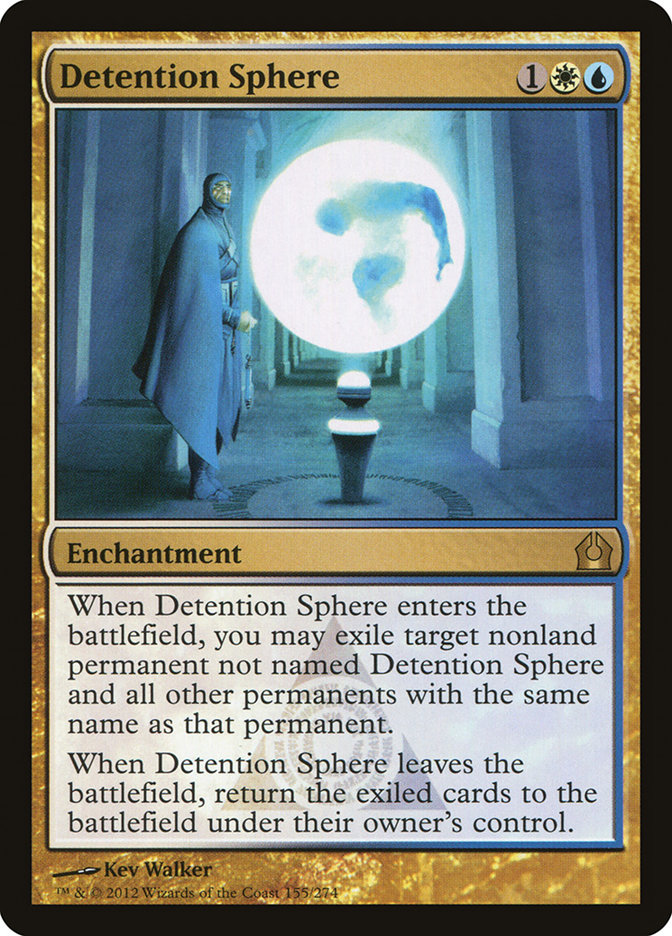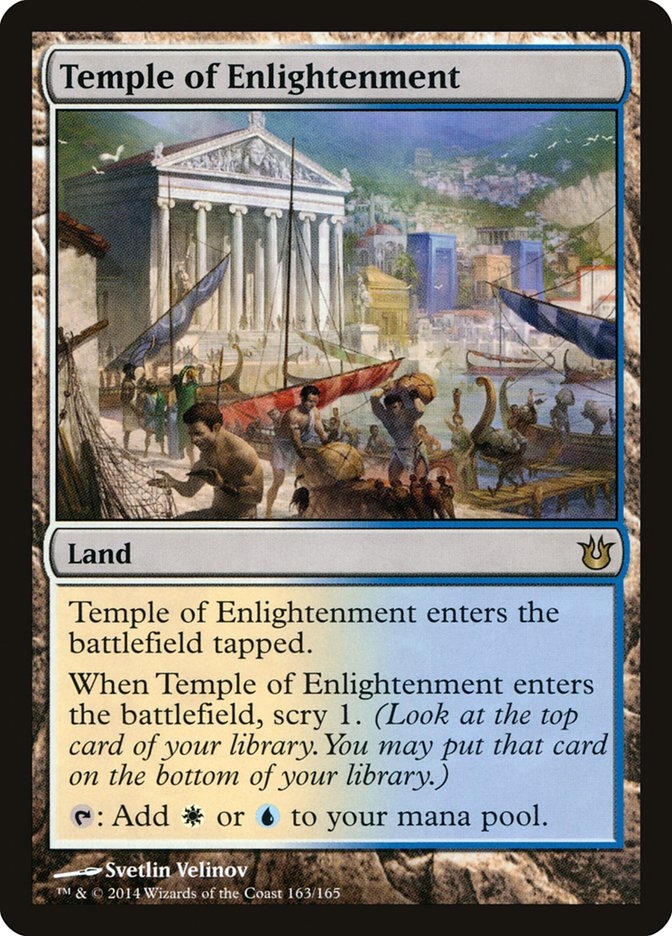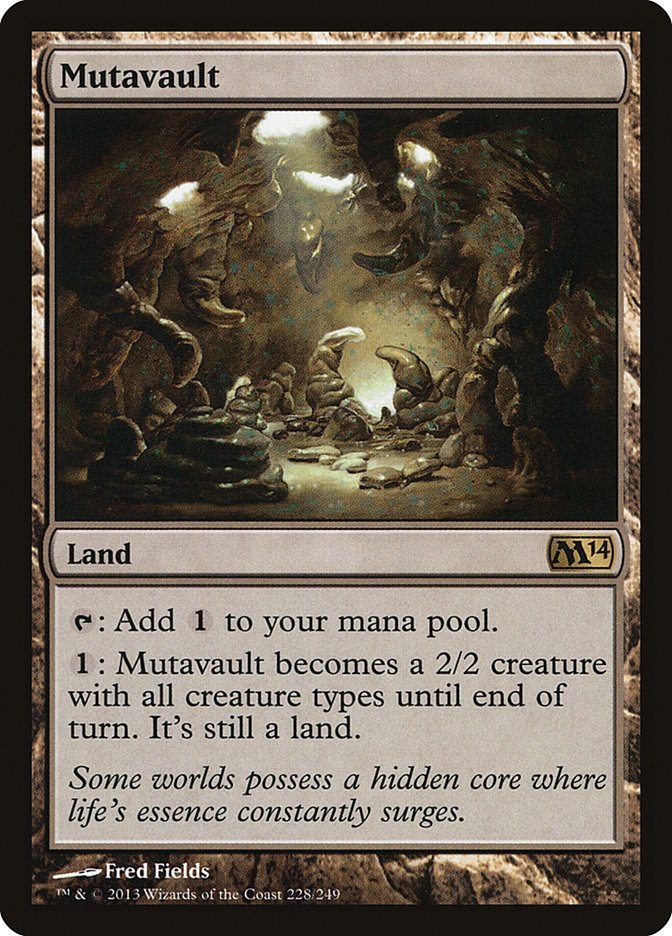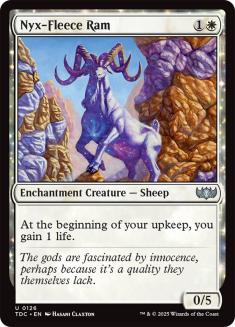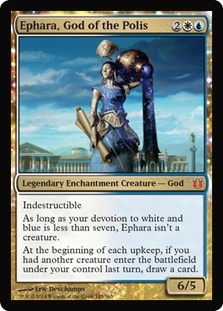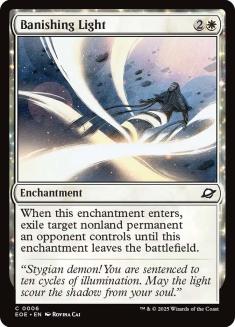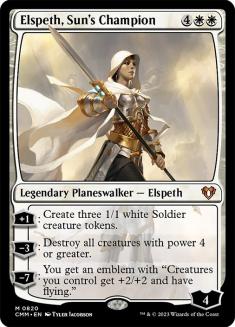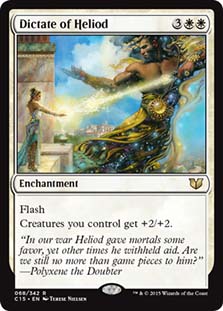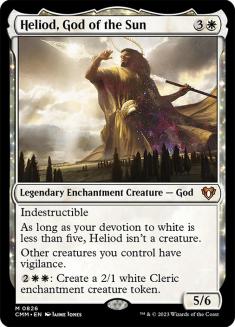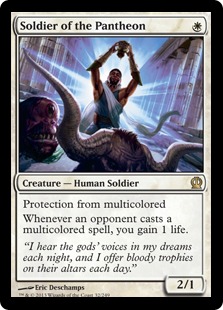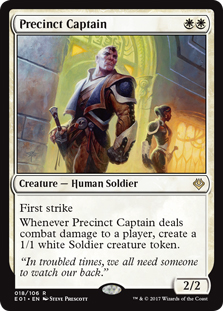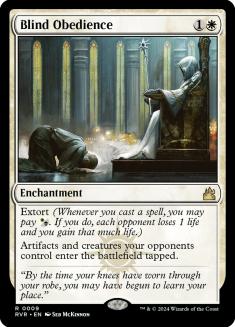OK, not exactly.
This deck is capable of dealing lethal damage with the assistance of a 2/7 Nyx-Fleece Ram as early as Turn 5 but overall functions as a midrange deck. It’s
a deck that preys on the aggro and burn decks while having a resilient game against control.
We’ve seen U/W Devotion lists in the past, as recently as Brian Braun-Duin and Chris VanMeter’s Versus Video last week. We’ve also seen a take
on Mono-Blue Devotion that splashes for Detention Sphere and Ephara, God of the Polis. White Weenie decks are nothing new either, but this deck is a quite
a different breed.
This list originates from Tomoharu Saito, a man regarded as one of the
best beatdown players Magic has ever seen. What really caught my attention were the two-drop creatures he decided to play. Instead of opting for 3/1s like
Daring Skyjek or Spirit of the Labyrinth, he chose utility creatures like Nyx-Fleece Ram and Keening Apparition. It’s a deck that wants to match up well
across the field and indeed does a good job of just that.
Let’s take a look.
Creatures (25)
- 4 Precinct Captain
- 4 Keening Apparition
- 3 Boros Reckoner
- 1 Archangel of Thune
- 1 Heliod, God of the Sun
- 4 Soldier of the Pantheon
- 2 Ephara, God of the Polis
- 3 Brimaz, King of Oreskos
- 3 Nyx-Fleece Ram
Planeswalkers (2)
Lands (25)
Spells (8)

This deck is packed with synergy and Ephara is the cornerstone that ties it all together. It’s necessary to have a critical mass of permanents that add to
devotion and thus the deck forgoes traditional staples such as Brave the Elements. While the threats are fairly easy to answer one-by-one, the continuous
stream of them paired with Ephara’s card advantage leaves the opponent exhausted of removal.
The deck gains incremental advantages from every extra token produced, life gained, or extra card drawn. Be forewarned: this deck has a ton of triggers to
watch out for. Be on your toes to not miss that one life when a multicolored spell is played and when you have Soldier of the Pantheon in play or not to
pass the turn too quickly before putting you Soldier token into play after a Precinct Captain hit. Ephara is a big part of your plan and drawing on their
upkeep after you play a creature on your turn is a critically unforgettable component of the deck. And be sure to never forget that Detention Sphere adds
to your devotion. They can become easily forgotten when placed too far out of sight.
Let’s look at individual card choices before moving onto the sideboard.
The best one-drop since Deathrite Shaman. He plays well both offensively and defensively and is tough to remove efficiently and often tough to block or
attack into. Although the deck can play as a beatdown deck with the right draw, it’s often unnecessary to curve out perfectly. If you’re torn between
casting Soldier of the Pantheon on turn 1 or setting up a guaranteed play on turn 2, it’s often correct to play Azorius Guildgate or Temple of
Enlightenment. Delaying casting Soldier of the Pantheon until after you land an Ephara, God of the Polis is sometimes key to starting your card advantage
chain.
When Return to Ravnica was released this was a card that was ahead of its time. People are slowly figuring out how much Banishing Light and the influx of
new enchantment creatures pushes Keening Apparition to be a good card. But four maindeck good? I’d play eight maindeck Keening Apparition if I could.
It’s awesome to play Keening Apparition then immediately blow up an opposing Detention Sphere or Banishing Light to get Ephara’s draw trigger. I can’t name
a deck in Standard that isn’t playing any enchantments main deck. A turn 2 Keening Apparition forces your opponent to sequence their spells in less
favorable ways while you attack their life total. Late in the game, Keening Apparition can immediately free up a stronger creature from a Detention Sphere.
I’ve seen this card in a few sideboards lately and think the unanimous switch into maindecks is just around the corner.
As good as it is cute, Nyx-Fleece Ram looks rather odd being played alongside cheap white creatures known for their beatdown qualities. With cards like
Ephara, Dictate of Heliod, and Elspeth, the deck wants to play the game out a bit longer than most aggro decks. When Nyx-Fleece Ram blanks a potential
attacker while still providing devotion and gaining life each turn, it feels like a two- or three-for-one.
This guy does a little bit of everything. As the only good two-drop for WW, he’s quite necessary to enable devotion. Precinct Captain is typically a
must-kill threat against empty boards that will either gain you a 1/1 Soldier or take the bullet for the Brimaz that is soon to follow. When in multiples,
the first strike creates a wall that’s hard to break through. Precinct Captain is at his best when creating a 1/1 Soldier token on the turn that you cast
Ephara, God of the Polis to draw you a card immediately.
The perfect predecessor to a turn 4 Ephara, another creature that is great on both offense and defense and is perfectly deserving of his three slots in the
deck. He deservingly dies often, making drawing two copies of this legendary cat only a small liability. The 1/1 Cat Soldiers that he creates work
perfectly into the gameplan of Dictate of Heliod, turning otherwise chump-attacking bodies into real threats.
This Minotaur has fallen out of favor recently. The three white mana symbols in its casting cost are quite the luxury in a deck wanting to make its Gods
into real attacking threats. As hard to attack into as it is to block, Boros Reckoner is great for enabling you to develop your plan of a game-breaking
Dicate of Heliod.
Again, Ephara is a lynchpin of the deck. Overextending becomes less of an issue since your creatures replace themselves to constantly refuel your hand.
It’s a close call to run two or three Ephara maindeck and the decision to play only two stems from a manabase concern. Currently with only six blue spells
I’m comfortable with ten blue mana sources and I don’t want a third Guildgate, Island, or a Mana Confluence.
If I could choose to draw one of either Heliod or Ephara, I’d choose Ephara in most situations. That being said, Heliod is still really strong and has
easier devotion requirements. I’d much rather draw one of each God than two of either. Heliod’s creature making ability works well with Ephara’s draw
trigger and it gives the deck a way to put creatures into play on the opponent’s turn. Deicide is surprising effective against this deck and reducing that
card’s potency was a deckbuilding consideration. The vigilance-granting ability even comes up from time-to-time with Boros Reckoner and Archangel of Thune.
Another card that mashes aggro. Things get pretty filthy when she’s left unbothered with her sheep buddy. She competes a bit with Dictate of Heliod both
for the 5-drop slot and for a creature pumping effect. Sometimes you want to play a Dicate of Heliod first to ensure that she’s able to block or to get out
of range of Mizzium Mortars so the split is one that I’m happy with.
Does everything the deck wants: creates creatures to trigger Ephara, adds devotion while being a non-creature permanent, and removes difficult creatures
like Stormbreath Dragon. Her problem is that she’s in a deck alongside one and two-drop creatures, which creates a tension over how many lands the deck
should run. Mutavault and Temple of Enlightenment alleviate the concern somewhat. As much as I’d like to run three of Elspeth, two is the number that fits
best.
Basically an Elspeth emblem. Because it’s a newly printed card, most opponents won’t know what’s going on when you attack with your team with five open
mana, and those that do won’t be able to make good blocks anyway. Because white has so many good three-drops, this card gets the nod over Spear of Heliod
for curve concerns. I don’t see any reason to play Hall of Triumph in white as a pair to Spear of Heliod when this card is in print. It’s insane in Limited
and equally insane in Standard.
A two-drop that’s not a creature. The idea is to provide a mana-sink and repeatable damage source that’s hard to remove and adds to devotion. Sometimes
against Mono-Black Devotion it’s pretty obvious that they have a removal spell for the first creature when they pass on turn 2 or 3. In that situation this
is what you’d rather play to keep them using their mana efficiently. Blind Obedience shines the most against haste creatures like Ash Zealot, Chandra’s
Phoenix, and Stormbreath Dragon and has good utility against Whip of Erebos and Obzedat, Ghost Council as well. If you’re ahead on board, Blind Obedience
makes it difficult to brick-wall your attackers with a Courser of Kruphix or a Desecration Demon. Elspeth also becomes much less potent and leaves the
Planeswalker vulnerable to attack. The competition that is Imposing Sovereign was tested and discarded due to its inability to get into combat profitably
and thus its 2/1 stature was deemed too insignificant.
Much better than Banishing Light and worth splashing blue for. Roughly 20% of the time it hits two or more permanents, and when that happens you’re
incredibly far in the driver’s seat. Having one of these in play makes turning Ephara into a creature much easier. With two in play she’s always a creature
with only one other non-land permanent, so even against decks high on removal she’ll be attacking with reasonable consistency. Against opposing Detention
Sphere decks, you have Keening Apparition to destroy theirs while their Detention Spheres can’t remove yours.
The scry off the Temple of Enlightenment makes life a lot easier for a deck that runs Nyx-Fleece Ram and Elspeth, Sun’s Champion. Simply put, the Temples
allow you to see more of your deck in on average game than before. One-ofs are drawn or scryed to the bottom and powerful situational cards increase in
value due to cheap filtering.
Great to increase the land count while not reducing the threat count. Since this is a creature deck and creature decks are notoriously weak to sweepers
like Supreme Verdict and Anger of the Gods, it’s a relief to have access to a land that can threaten them without committing to the battlefield too much.
This is a devotion deck that doesn’t have relevant mana-sinks outside of Heliod. Because we don’t need Nykthos, Shrine of Nyx to fire off huge Sphinx’s
Revelations, we have four copies of Mutavaults and zero copies of Nykthos. When also wanting to cast Boros Reckoner, I feel like four colorless lands is
the right number and that creating more 2/1 Enchantment Soldiers from Heliod, God of the Sun or sometimes casting an earlier Elspeth, Sun’s Champion is
less valuable than the cost it would be to the manabase.
The Sideboard
In the sideboard we finally start to see some non-permanent spells. Playing spells that don’t add to devotion becomes acceptable when they prevent
something extremely impactful from happening or from staying in play.
1 Archangel of Thune – Comes in against decks with a heavy creature or direct damage plan. Great when you board into 4 Nyx-Fleece Ram.
3 Glare of Heresy – Efficient against G/W decks, Detention Sphere, and Elspeth decks.
2 Negate – Necessary to combat U/W Control. You really need to stop their Planeswalkers and big Sphinx’s Revelations. Decent against burn to stop their
bigger spells like Warleader’s Helix or against decks with non-creature spells with large casting costs such as Maze’s End.
2 Banisher Priest – Creature removal in the form of a 2/2 body that adds two devotion. It’s most effective against decks that produce tokens, since you can
exile them permanently.
1 Nyx-Fleece Ram – The fourth sheep comes in against decks that are reliant on beating down with ground creatures or finishing you off with burn spells.
Often comes in alongside the second Archangel of Thune.
3 Rest in Peace – For the longest time graveyards have been irrelevant in Standard. Now that B/G Dredge has received so many cards and has becoming popular
having a high-impact card like Rest in Peace really disables how the deck functions. Although Rest in Peace is extremely narrow in application, its impact
is so big that I like having access to three. Drawing multiples isn’t bad, considering that they could have Abrupt Decay or Golgari Charm to remove the
first.
1 Ephara, God of the Polis – Good against U/W Control and other high-removal and grindy matchups.
1 Banishing Light – Sometimes it’s good to not be a Detention Sphere. There are matchups where Detention Spheres clog up the board and having more answers
to them can tilt the game in your favor.
1 Spear of Heliod – We want Spear when we need to power-up our 2-power creatures sooner than turn 5. This occurs mainly against decks with Sylvan Caryatid.
Vs. Mono-Black Devotion and its variants
Out:
In:
We’re taking out Plains because they’re a Thoughtseize deck that has even more discard after sideboarding. You want a healthy number of spells against that
gameplan. Banisher Priest “dies to everything” but its optimal role here is to kill a Pack Rat token permanently. We’re also a bit short on way to beat a
Desecration Demon, so Banisher Priest and Banishing Light shore that up. Watch out if they’re the green version packing Abrupt Decay. They can destroy
Detention Sphere at instant speed and really get you in combat if you aren’t aware. Negate is too reactive for my tastes and you’d rather have another
threat than a reactive answer.
Vs. Mono-Blue Devotion
Out:
In:
Boros Reckoner matches up very poorly against Tidebinder Mage and Master of Waves so that’s first to go. Since they’re likely sideboarding in
Domestications in addition to Hypnotic Siren and possibly Bident of Thassa, Keening Apparition has good value against them. They have a tough time dealing
with creatures directly, so your Banisher Priests should stay alive for the most part.
Vs. R/W Burn
Out:
In:
We keep in Detention Sphere since it’s good against Chandra’s Phoenix and we need a safe amount of removal in case they have Satyr Firedancer. Keening
Apparition is still good against Chained to the Rocks so they stay too. Pump the fist because this is nearly unloseable.
Vs. U/W/x Control
Out:
Likely the toughest matchup. Nyx-Fleece Ram and Boros Reckoner are embarrassing game 1. They have tons of cards to play around, most notably Supreme
Verdict and it’s tough to put enough pressure on them before a chain of Sphinx’s Revelations put the game away.
Vs. B/G Dredge
Out:
Soldier of the Pantheon gets trumped quickly by Sylvan Caryatid and Satyr Wayfinder. They won’t put you under a fast clock and Nyx-Fleece Ram can’t block a
Nemesis of Mortals, so they get cut as well. They make huge creatures and your plan is to go toe-to-toe with them on that front while shutting them out
with Rest in Peace.
Vs. G/W Aggro
Out:
In:
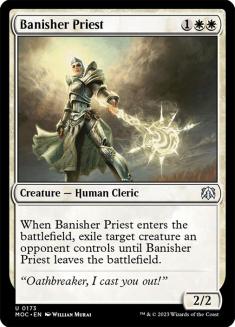

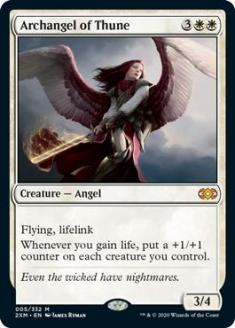
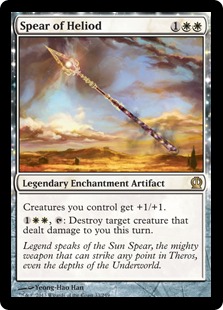
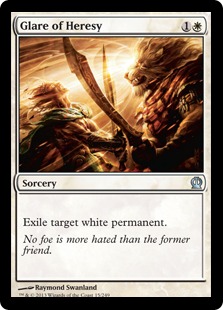



Precinct Captain gets trumped in combat very quickly, while Soldier of the Pantheon holds its own against Voice of Resurgence and Fleecemane Lion well.
Archangel of Thune will generally be better than Dictate of Heliod, given their shortage of removal. Blind Obedience gets cut because they tend to keep a
high life total with blockers and Unflinching Courage, and tapping down later blockers won’t help you get past the earlier ones.
People haven’t quite adapted to Mono-Black Devotion and U/W Control just yet. In the upcoming weeks I expect aggressive decks built to combat the slow
control decks to make a resurgence on the scene. If this is what you predict the metagame to be at the Open Series in Knoxville, then I recommend taking it to the next level
and stopping those aggro decks in their tracks with sparkly sheep.
Baaaaaaa!!!

